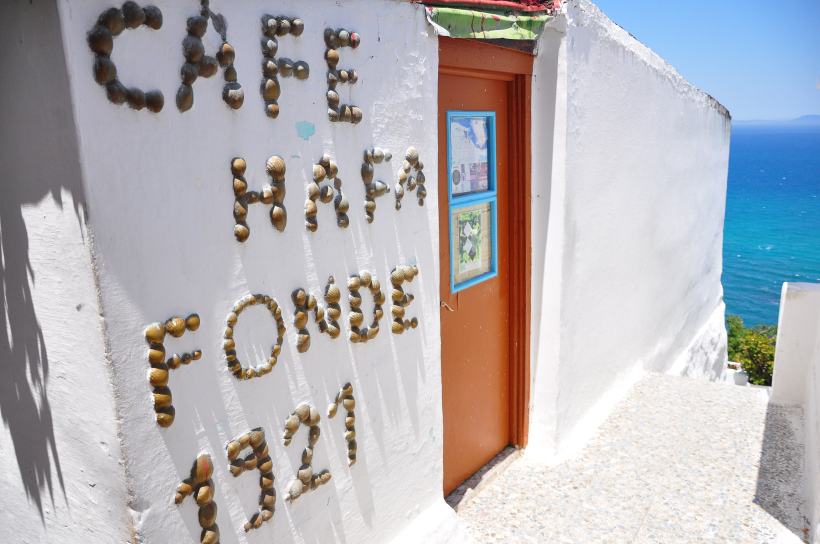William Burroughs once called it “The Interzone.” Though Tangier has long given up its status as an “International Zone,” a definite sort of internationality of spirit exists in Tangier like no other city in Morocco. In Tangier, you are as likely to go out for tapas as for a tajine. Travelers who make the stop here are rewarded with some breathtaking views and a good laugh—Tanjaouis, as the natives of Tangier are called, are well-known throughout Morocco for their wit and joie de vivre.
Though neglected (and sometimes even ridiculed) by the previous king, Hassan II, his son and successor, King Mohammed VI, has rediscovered this area. He stays at his palace in Tangier for one month or so out of the year, usually in the summer. The entire area has benefitted greatly from his renewed interest in this region. There are projects at various stages of completion, sometimes making congestion a real hassle. In Tangier, perhaps the most notable developments are along the old fishermen’s port, where a new port almost finished and set to house yachts and high-end apartments, as well as a newly-completed reconstruction of the façade of the old medina. To the east of Tangier, the new Port Tangier-Mediterranean has been built for larger ferries and commercial transports. To the west, the road has been widened and now there are the streetlights along the route to Cap Spartel as well as new roads all along the entire Mediterranean Coast, from Tangier to Al Hoceima, making this one of the best, and most breathtaking, road trips you can take in all of Morocco.
In Tangier, you can visit the only American National Monument not located in the U.S. at the American Legation of Tangier and take in a sunset at the Cave of Hercules, where Hercules is rumored to have rested after completing his Eleventh Labor. Travelers will also want to tour Tangier’s historic kasbah, lively medina and take a paseo in the evening with the locals along the Boulevard Pasteur and along the newly paved corniche that curls beneath the kasbah along the Mediterranean.
Recommended Accommodations
Of the cheaper options in the medina, The Melting Pot Hostel (3 Rue de Tsouli, tel. 0539/947 731, www.meltingpothostels.com, 110Dh) is the cleanest and most reliable. Beds are comfortable, sheets clean and towels are provided. Popular with backpackers and weekenders, especially from Spain, the hostel serves up a free, though lean, breakfast. The friendly staff provides pointers for the medina and around Tangier. A wonderful rooftop terrace offers views over the port. Wifi is included with your stay.
La Tangerina (19 Riad Sultan, tel. 0539/947 731, http://latangerina.com, 800Dh) is what you imagine when you picture a riad in the kasbah of Tangier. The location couldn’t be more stellar, with a wide terrace with a few chaise lounges for you to relax in as you soak up the views over the Kasbah and the Strait of Gibraltar. The rooms are spacious without being palatial; some have private patios. The simple, Mediterranean-Moroccan decor in a breath of fresh air after a stressful day in the medina. The service is outstanding and friendly without being intrusive, and the daily fresh-cut flowers add to the sense of being at home. Breakfast and wifi are included, as well as afternoon tea. There is an onsite hammam for couples and dinner is available upon request.
Recommended Restaurants
Located in Marshan, close to the Phoenician tombs, Café Hafa (Marshan, Mon.-Fri. 8:30am-11pm, Sat.-Sun. 8:30am-2am) is a must stop for literary types. William Burroughs, Paul Bowles, Tennessee Williams, The Rolling Stones, The Beatles, and countless others have stopped by Café Hafa to sip on a mint tea and look out over the Mediterranean to Spain. Kids from the local schools sometimes come here to do homework and some of the young men get together to play Parcheesi (Parchees in the local vernacular). The tapping of their dice clinking across the glass top of the gameboard blends into the background with the wind, the surf, and the inevitable one or two bees that find your mint tea as delicious as you do. At night, there is often music. If anyone smokes anything other than a cigarette, a strict “don’t ask, don’t tell” policy should be adhered to. The attached restaurant serves up cheap sandwiches and delicious bowls of bissara (bisr, in the north) can be had for less than a dollar!

Just outside the medina is the chic El Morocco Club (1 Rue Kachla, tel. 0539/948 139, http://elmoroccoclub.ma, Tues.-Sun. noon-3pm and 7pm-midnight, 140Dh) is the reincarnation of an iconic residence designed by the famous American architect Stuart Church and frequented by The Beats and Mick Jagger during their sojourns in Tangier. Dishes are French-Moroccan fusion and include chicken with bakoula, a sort of cooked spinach-like vegetable, and grilled sardines lathered in chermoula, a Moroccan olive oil sauce with coriander, cumin, garlic and paprika. The downstairs Piano Bar, though a bit small, can be a real treat with live music, competent cocktails and fresh oysters served starting at 8pm.
Of the few French restaurants in Tangier, O Saveur (15 Rue Boubana in the California neighborhood, tel. 0539/949 660, Mon.-Sat. 8pm-11pm, 400Dh) is le top. Dishes vary seasonally and according to the chef’s whims. You might find bluefin tuna prepared three different ways: (carpaccio with rocket and parmesan, cooked with sesame, or kissed at the grill with crushed tomatoes, crystalized garlic, and basil), followed with a bread brioche with pineapples roasted with vanilla for dessert…or you might find something else. Trust the chef. Don’t forget to order dessert. And, when the weather permits, which it usually does in Tangier, consider dining in the outdoor garden beneath the stars.